
The aye-aye (Daubentonia madagascariensis) is a lemur, a strepsirrhine primate native to Madagascar that combines rodent-like teeth that perpetually grow[4] and a special thin middle finger.
It is the world's largest nocturnal[5] primate, and is characterized by its unusual method of finding food: it taps on trees to find grubs,
then gnaws holes in the wood using its forward slanting incisors to
create a small hole in which it inserts its narrow middle finger to pull
the grubs out. This foraging method is called percussive foraging, and takes up 5–41% of foraging time.[6][7] The only other animal species known to find food in this way is the striped possum.[8] From an ecological point of view, the aye-aye fills the niche of a woodpecker, as it is capable of penetrating wood to extract the invertebrates within.[9][10]
The aye-aye is the only extant member of the genus Daubentonia and family Daubentoniidae. It is currently classified as Endangered by the IUCN; and a second species, Daubentonia robusta, appears to have become extinct at some point within the last 1000 years.[11]
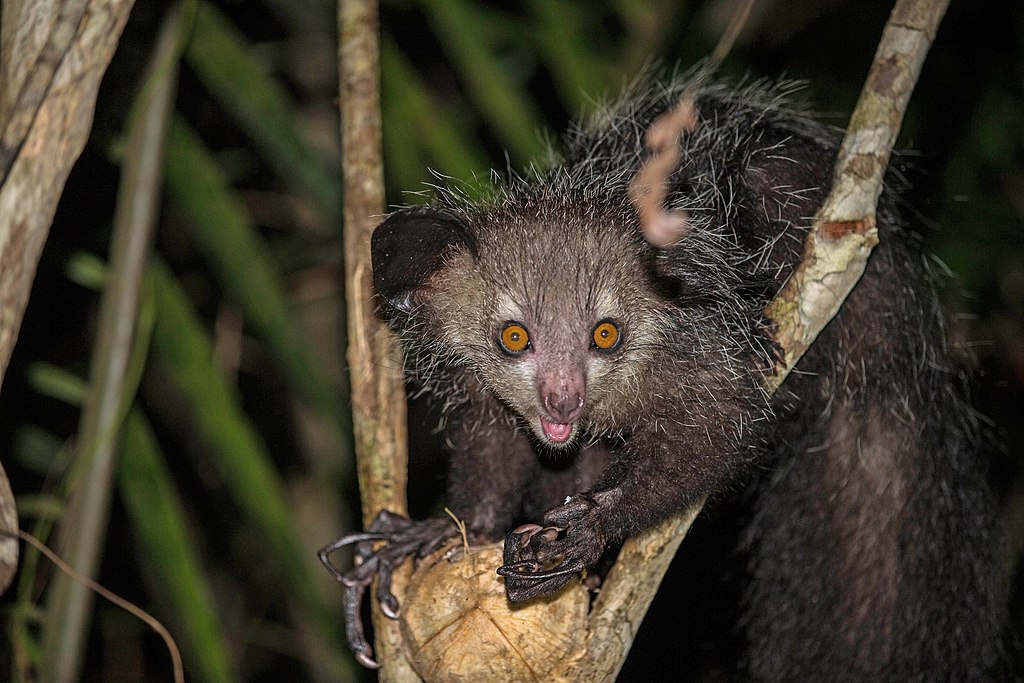
Etymology
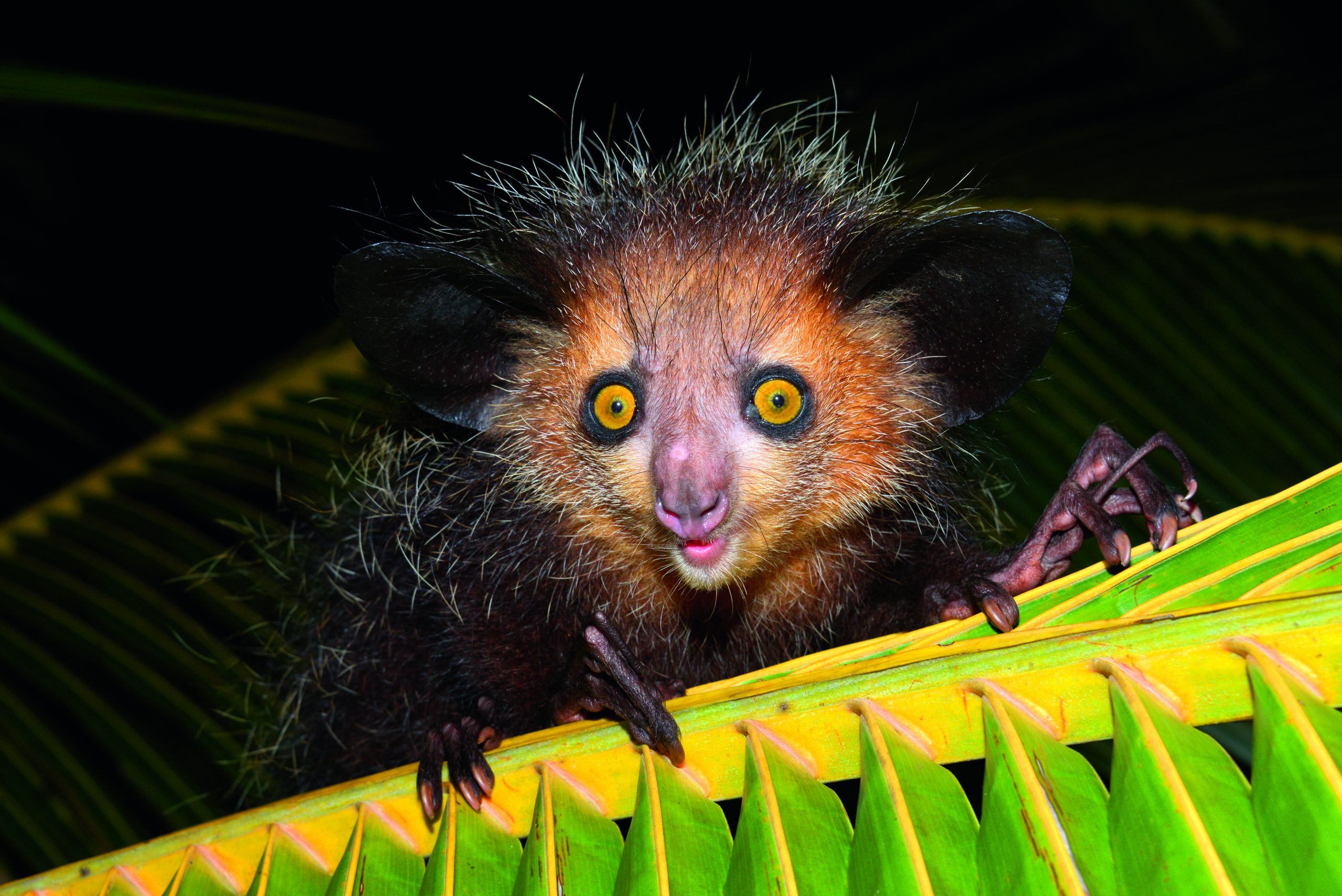
The genus Daubentonia was named after the French naturalist Louis-Jean-Marie Daubenton by his student, Étienne Geoffroy Saint-Hilaire, in 1795. Initially, Geoffroy considered using the Greek name Scolecophagus
("worm-eater") in reference to its eating habits, but he decided
against it because he was uncertain about the aye-aye's habits and
whether other related species might eventually be discovered.[12] In 1863, British zoologist John Edward Gray coined the family name Daubentoniidae.[13]
The French naturalist Pierre Sonnerat
was the first to use the vernacular name "aye-aye" in 1782 when he
described and illustrated the lemur, though it was also called the
"long-fingered lemur" by English zoologist George Shaw in 1800—a name that did not stick. According to Sonnerat, the name "aye-aye" was a "cri d'exclamation & d'étonnement" (cry of exclamation and astonishment). However, American paleoanthropologist Ian Tattersall noted in 1982 that the name resembles the Malagasy name "hai hai" or "hay hay", which is used around the island. According to Dunkel et al.
in 2012, the widespread use of the Malagasy name indicates that the
name could not have come from Sonnerat. Another hypothesis proposed by
Simons and Meyers in 2001 is that it derives from "heh heh", which is Malagasy for "I don't know". If correct, then the name might have originated from Malagasy people saying "heh heh" to avoid saying the name of a feared, magical animal.[12]
The aye-aye's classification with the order Primates has been just as uncertain. It has been considered a highly derived member of the family Indridae, a basal branch of the strepsirrhine suborder, and of indeterminate relation to all living primates.[16] In 1931, Anthony and Coupin classified the aye-aye under infraorder Chiromyiformes, a sister group to the other strepsirrhines. Colin Groves upheld this classification in 2005 because he was not entirely convinced the aye-aye formed a clade with the rest of the Malagasy lemurs,[17] despite molecular tests that had shown Daubentoniidae was basal to all Lemuriformes,[16] deriving from the same lemur ancestor that rafted to Madagascar during the Paleocene or Eocene. In 2008, Russell Mittermeier, Colin Groves, and others ignored addressing higher-level taxonomy by defining lemurs as monophyletic and containing five living families, including Daubentoniidae. [18]
Further evidence indicating that the aye-aye belongs in the superfamily Lemuroidea can be inferred from the presence of petrosal bullae encasing the ossicles of the ear. However, the bones may also have some resemblance to those of rodents.[14] The aye-ayes are also similar to lemurs in their shorter back legs.[15]
Anatomy and morphology
Young
aye-ayes typically are silver colored on their front and have a stripe
down their back. However, as the aye-ayes begin to reach maturity, their
bodies will be completely covered in thick fur and are typically not
one solid color. On the head and back, the ends of the hair are
typically tipped with white while the rest of the body will ordinarily
be a yellow and/or brown color.
In length, a full-grown aye-aye is typically about three feet
long with a tail as long as its body. Among the aye-aye's signature
traits are its fingers.[19]
The third finger, which is thinner than the others, is used for
tapping, while the fourth finger, the longest, is used for pulling bugs
out of trees.[15] The middle finger is unique in that it possesses a ball-and-socket metacarpophalangeal joint.[20]
The complex geometry of ridges on the inner surface of aye-aye
ears helps to sharply focus not only echolocation signals from the
tapping of its finger, but also to passively listen for any other sound
produced by the prey. These ridges can be regarded as the acoustic
equivalent of a Fresnel lens, and may be seen in a large variety of unrelated animals, such as lesser galago, bat-eared fox, mouse lemur, and others.
Females have two nipples located in the region of the groin.
Behaviour and lifestyle
Though foraging is usually solitary, they occasionally forage in groups. Individual movements within the group are coordinated using both vocalisations and scent signals.[citation needed]
Like many other prosimians, the female aye-aye is dominant to the male. They are not typically monogamous, and will often challenge each other for mates. Male aye-ayes are very assertive in this way, and sometimes even pull other males away from a female during mating. Males are normally locked to females during mating in sessions that may last up to an hour. Outside of mating, males and females interact only occasionally, usually while foraging.[citation needed] The aye-aye is thought to be the only primate which uses echolocation to find its prey.[25]
Distribution and habitat
As many as 50 aye-ayes can be found in zoological facilities worldwide.[28]
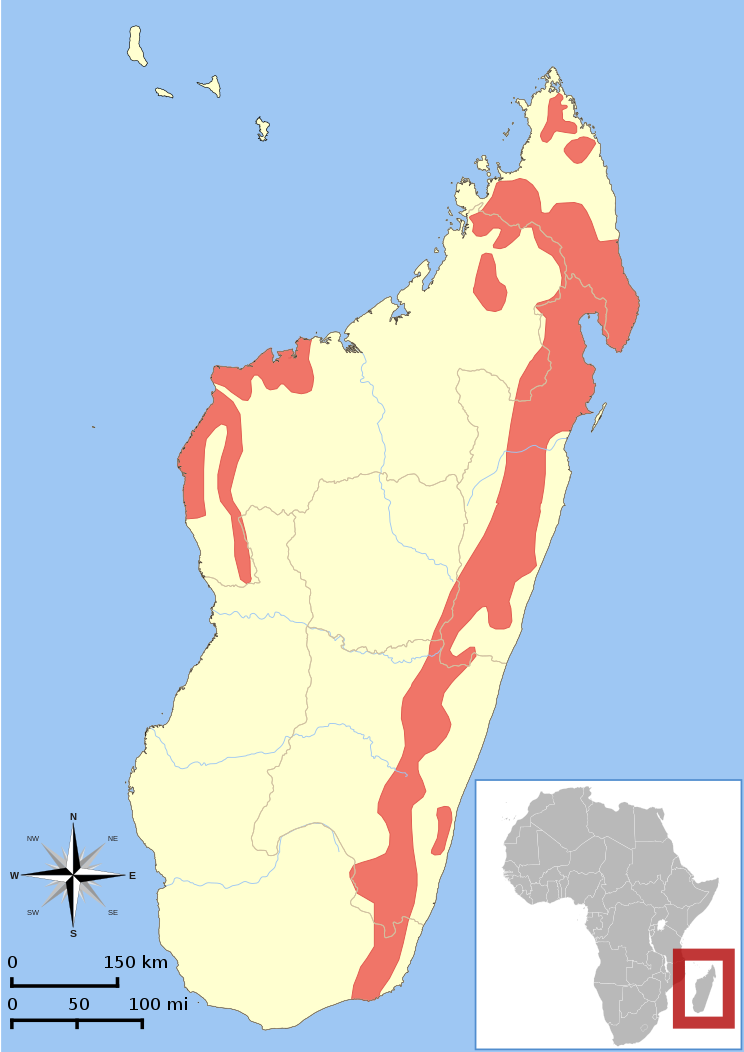
Distribution of
Daubentonia madagascariensis[1]
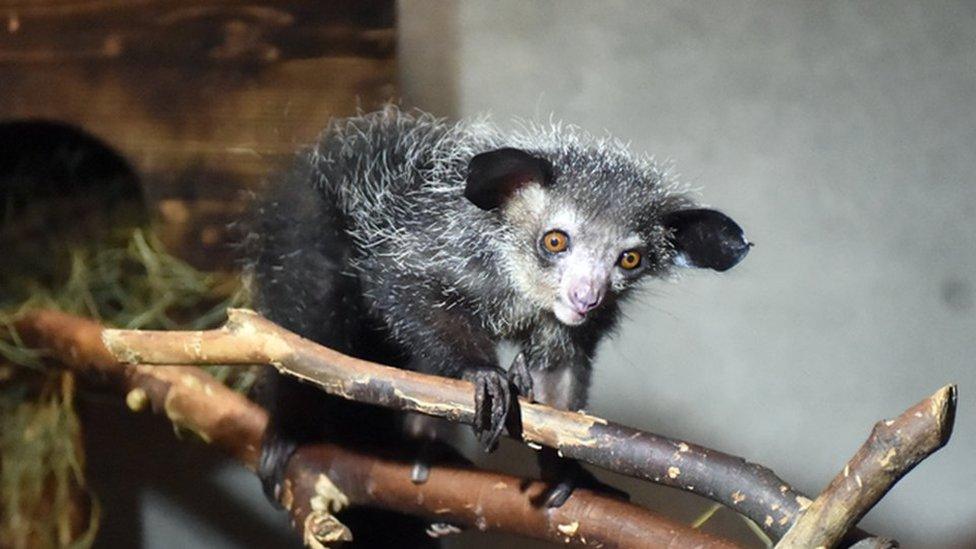
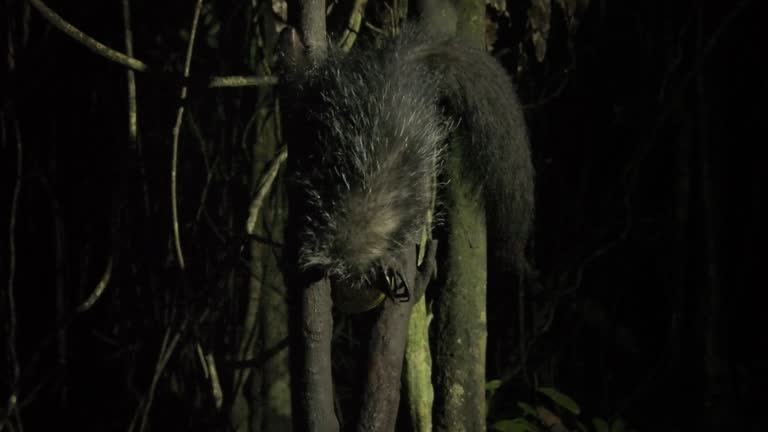
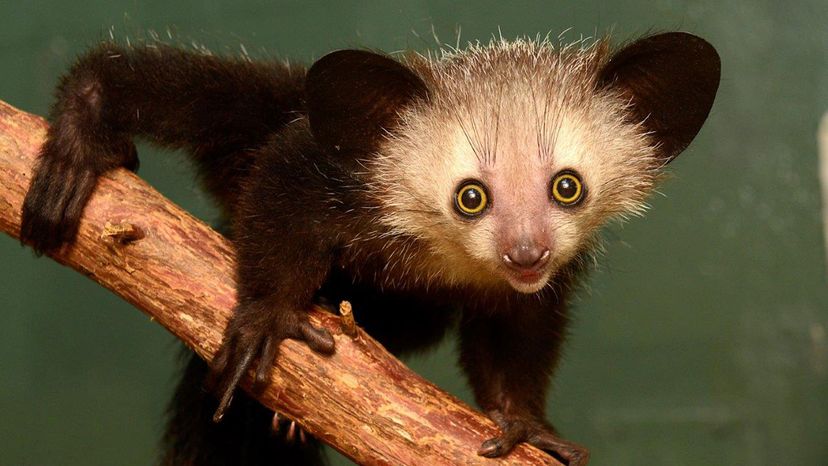



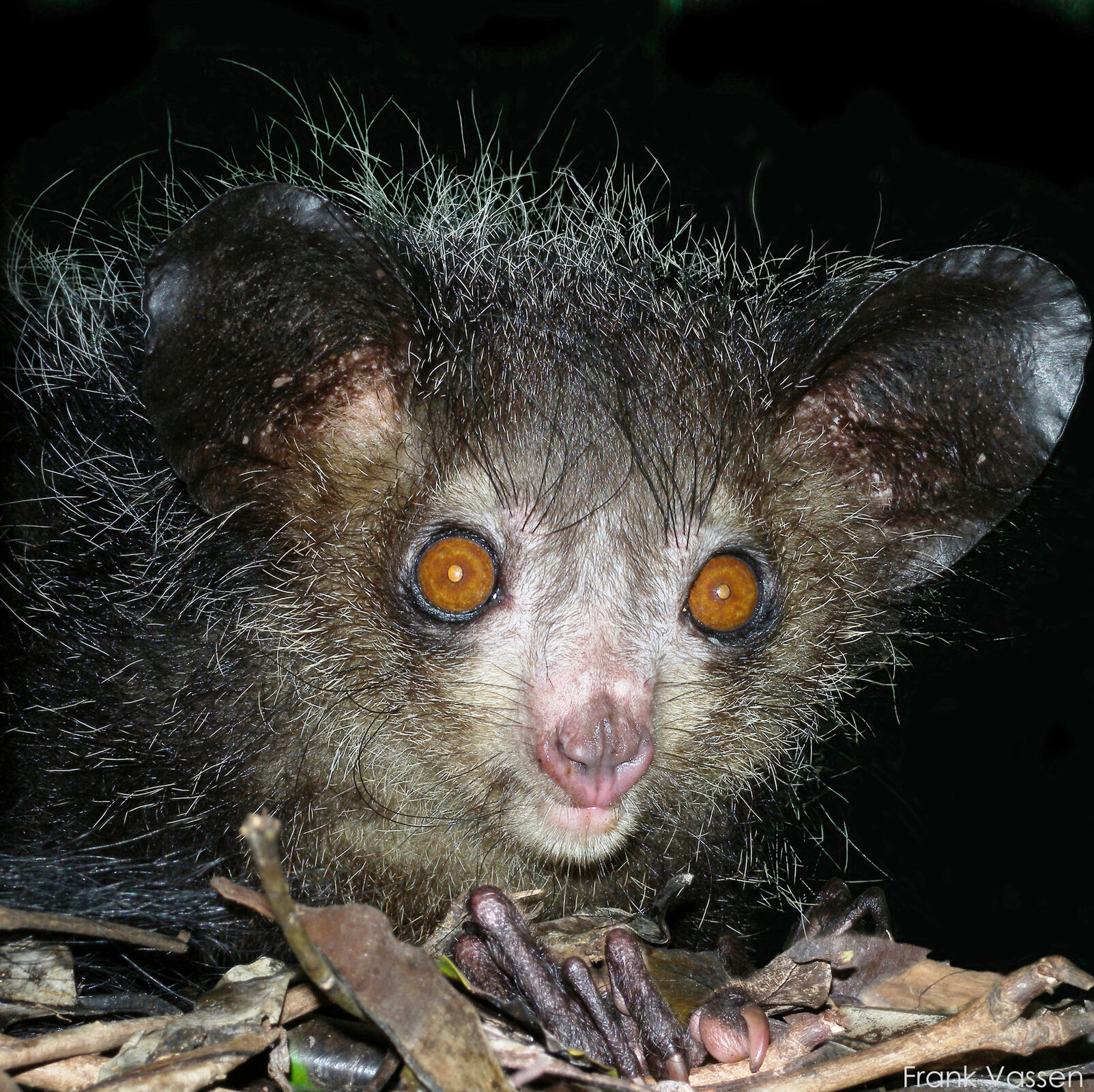
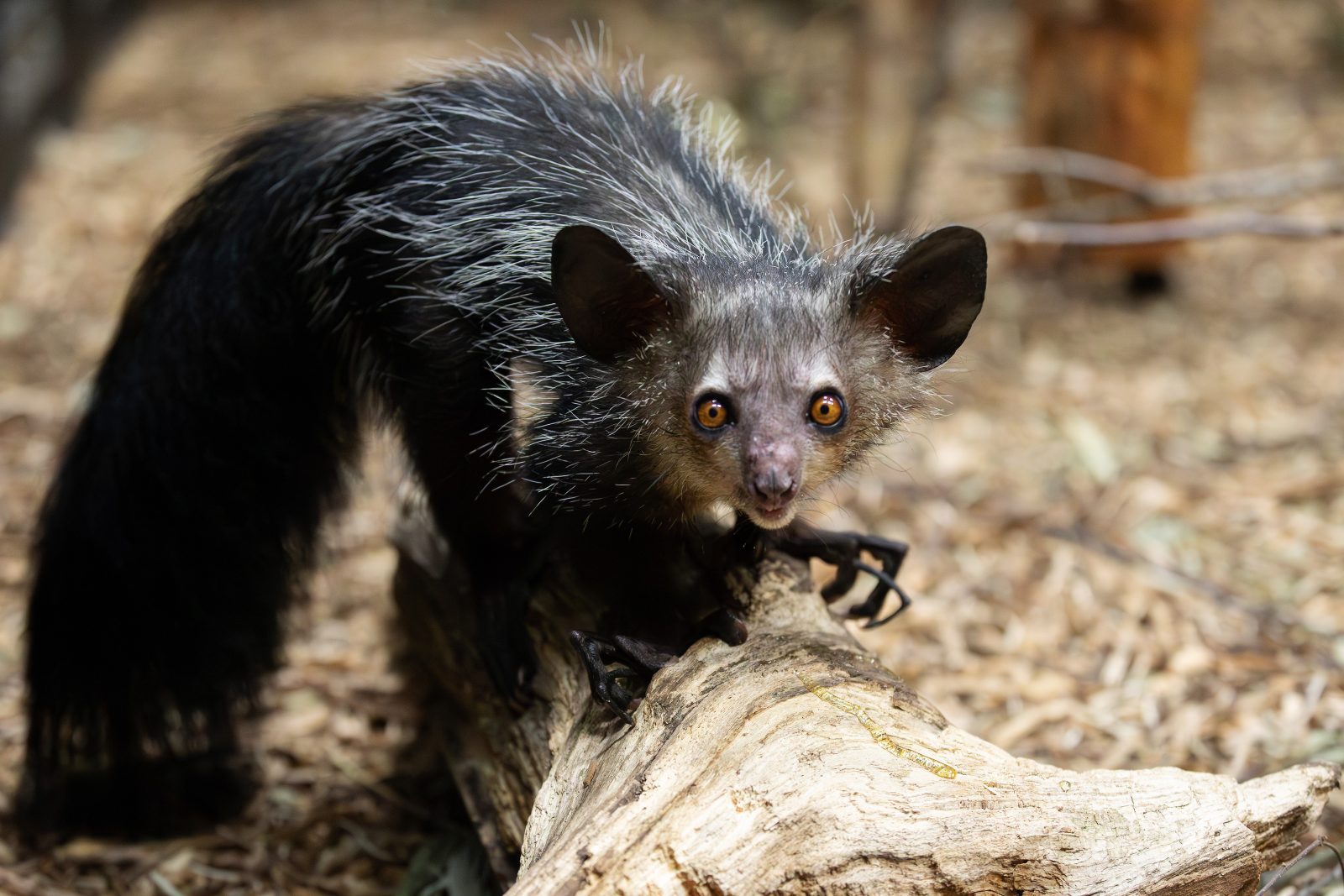
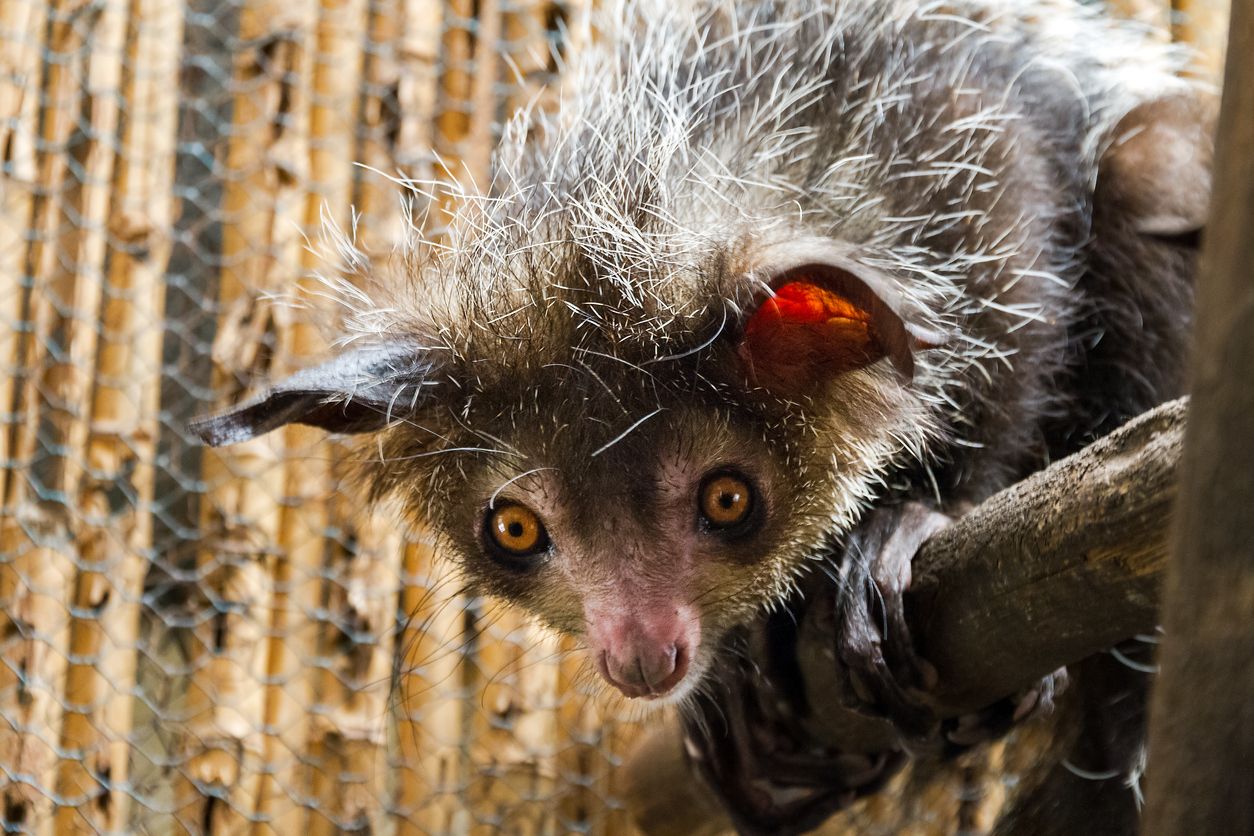




No comments:
Post a Comment
Note: Only a member of this blog may post a comment.